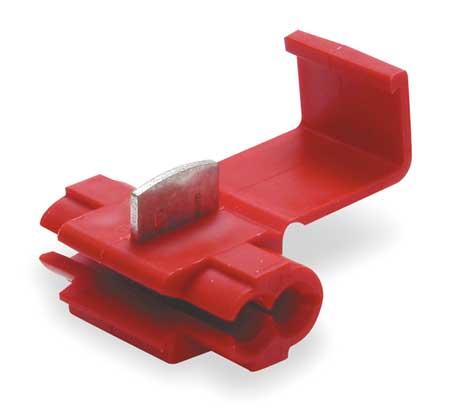I would use a suitcase wire connector to accomplish your goal. No stripping, no cutting, mo terminal blocks, no wire nuts. Just add a wire into it and squeeze it onto your buss wire.

I bought these (3M blue version) but how the heck do you squeeze them for a secure hold? I've used my hand and a pair of vice grips, no consistent luck!
Well, this is the tool that works best....
Scotchlok Crimper
...available from MicroMark.....or your electrical shop.
Of course, 't ain't cheap. OTOH, the principal behind it....wide faced, parallel-closing jaws...is the key to proper closure of the suitcase connectors.
That said, check the web and a well-stocked hardware for pliers that have these same features....but at a lower price, perhaps. Then again, you get what you pay for...and if/when you're done with the buss-tapping project, you can always sell the specialty pliers to the next splicer-in-need.
What gets me about some of the nay-saying responses to the use of Scotchlok connectors is that they were invented/perfected by 3M. Now, I don't know about the rest of you, but my septuagenarian, engineering career experience, sez those folks tend to know what they're doing in product creation, product marketing. In fact, I regard products with a 3M pedigree to be in the same proven category as those with a UL marking....not much of a 'stretch' for me, anyway.
BTW, I use the Scotchloks liberally to tap my buss wires. Nary a problem. And I use more commonly-available parallel jaw pliers......the source thereof I've lost track of. I suspect many of the 'problems' folks encounter with the suitcase connectors are related to improper application. The variety of connectors are made for specific splice-combinations of wire sizes. If this is not understood, misapplied, why would you expect forgiving results???? Then, couple that with using the wrong wire size to begin with for the current-carrying loads, the problems are exacerbated. Add to that incomplete crimp-and-closure of the connector,........well, 'nuf said.
But, TEHO. We are, after all, graduates of the School of Hard Knocks and Amazing Results.....are we not?

![]()




